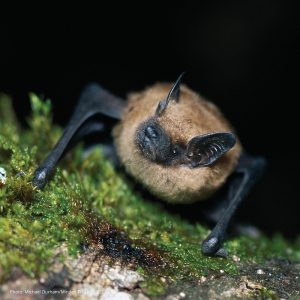 Big Brown Bats (and the very endangered Little Brown Bats) sometimes form large maternity colonies in attics and outbuildings. Because of White-nose Syndrome, these bats need all of the help they can get. The Vermont Department of Fish & Wildlife has resources available to help you learn more about our bats, including these two documents:
Big Brown Bats (and the very endangered Little Brown Bats) sometimes form large maternity colonies in attics and outbuildings. Because of White-nose Syndrome, these bats need all of the help they can get. The Vermont Department of Fish & Wildlife has resources available to help you learn more about our bats, including these two documents:
 Loading...
Loading...
 Loading...
Loading...
This chapter from the Humane Society of the United States publication, Wild Neighbors: The Humane Approach to Living with Wildlife by John Hadidion has additional information:
 Loading...
Loading...
Would you like to encourage bats to live on your property, just not in your attic? The Vermont Bat Center recommends the following resources for building or buying a bat house:
Where can I find plans on how to build a bat house?
- The National Wildlife Federation has complete instructions here.
- Bat Conservation International has plans for different styles here.
Where can I buy a bat house?
There are many companies and organizations that sell bat houses. You must be careful though. Many are poorly constructed or the design of the bat house will not attract bats. A bat house should not look like a bird house with no bottom. It should be wide and tall with roosting chambers that are ¾ inch. It should have grooves or mesh on the roosting surfaces. It should be painted black if it will be put up in Vermont.
Here are some places to buy a bat house. There are many others.
